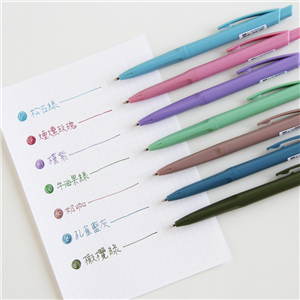章節試閱
1.
THE INSPIRATIONS
靈感
I had no intention of writing a treatise on design doctrine; I simply would like to impress on the reader the unpredictable nature of the first stage of a design project. The mind explores all kinds of directions; ideas and thoughts come and go. This chapter shows fleeting glimpses of Kyoto, design, literature, art, and life. They spark to produce an epiphany, and eventually become the inspiration for this book.
我無意撰寫任何討論設計原理的專論。我只是單純地,想讓讀者對設計方案的起始階段是如何無法預測且不可捉摸留下印象。設計者的心靈必須對事物做全方面的探索,因為構想和思緒來去不定。這一章展示了京都、設計、文學、藝術以及生活方面的乍現靈光。這些閃爍的靈光不僅讓我有所頓悟,最後也成了創作此書的靈感。
THOUGHTS ON THE IDEA OF THIS BOOK
有關這本書的創意緣起
A Glass of Water
This book began with a glass of water. It was a rainy day. With nothing better to do I went through old things. I found a picture that showed a close-up of a glass of water. I took this shot to a Cafe on Monday morning of February 2, 2006, the first workday morning right after I quit my job as an art director at Ralph Lauren Fragrances. The waitress served me this glass of water as soon as I had sat down. I still can remember the taste of the water – it was flavored with melancholy. I also recall the smell of that moment – it shimmered with the mixture of excitement and worry for the adventurous future. This glass of water represented more than an object – it is the visible appearance of an invisible meaning.
一杯水
這本書從一杯水開始。那是一個沒事好做的下雨天,我翻閱著一些舊雜物,發現了這一張近拍水杯的照片。那是我在一家小咖啡館裡拍攝的,日期是二○○六年二月二日,星期一早上,也是我離開Ralph Lauren香水部門藝術總監的第一個上午。我記得,當我一坐下來,女服務生立刻遞上了這杯水。我還記得那杯水的味道──滿載著憂鬱。我也仍能回想起那個時刻的氣味──閃爍著某種混合了對充滿冒險的未來,「一則以喜,一則以憂」的味道。這一杯水代表的不只是一件物品,而是涵蓋著無形意義的有形姿態。
The Invisible Meaning
I suffered from an overabundance of projects in 2006: I worked as a designer, a writer and a photographer, day and night, night and day. The heavy workload overwhelmed me, and finally I had to escape from New York and take refuge in Kyoto. In the temple where I lodged I met an old monk. Merciful, the monk sensed my uneasiness and offered me gentle and understated wisdom. He pointed to a full glass of water on a table and said, “The glass is like life. Life happens to us, each and every day. You are not happy because you are taking more than what you can handle. Take this full glass as an example – if we pour more water in it, it would overflow. One of the lessons in our life is to learn how to let go….” “A rose is a rose is a rose,” a quote by the American writer and poet Gertrude Stein (1874 – 1946), often is interpreted, as “things are what they are.” In Stein’s view, the sentence expresses the fact that simply using the name of an object already evokes the imagery and emotions associated with it. To me, a water glass is a water glass is a water glass. It possesses the invisible meaning of the liquid memory of Kyoto.
隱含之意
二○○六年,我纏身於一大堆案子裡。身兼設計師、作家和攝影師的我,日以繼夜,通宵達旦的工作。沉重的工作量淹沒了我,最後我只能從紐約逃走,到京都去避一避。在掛單的寺廟裡,我遇見了一位老和尚。善哉,這位和尚察覺到我的不安,不徐不緩地為我開示。他指著桌上一只裝滿水的玻璃杯,說:「這只杯子就像我們的人生。只要是人,都要在這個人生裡過日子。你不快樂,是因為你承擔的東西超過了你能負荷的範圍。就拿這個裝滿水的杯子來說,如果我們倒更多的水進去,水會滿溢出來。而我們人生中的一個課題,就是學著怎麼放開⋯⋯。」美國作家與詩人Gertrude Stein(1874─1946)提過:「玫瑰,就是玫瑰長成玫瑰的樣子。(A rose is a rose is
a rose.)」這句話常常被解釋為「東西,就是我們叫它東西的東西。」以Gertrude Stein的觀點來看,單純就一件物品的名稱,已經可以讓人聯想出與這件物品相關的形象與情感,也是這句話所要闡述的事實。對我而言,一個玻璃杯就是老和尚的玻璃杯的樣子,杯裡裝載著關於京都液憶的無形隱意。
A Liquid Memory
Water, “Sui” (water in Chinese), or “Mizu” (water in Japanese) – we came up with a sound for it. The words themselves are inert. But it gets really intriguing when we use that same system of symbols to communicate all the abstract and intangible things that we are experiencing. As I drank the memory of the water glass from the cafe in New York, the symbol of the water glass blended in with the things I was seeing in Kyoto. And before long, the melancholy of New York and the enchantment of Kyoto merged into a single unspeakable emotion. As a designer, I wanted to visualize this emotion. How to bottle the liquid memory of Kyoto? What scent captures these emotions? And what shape should the bottle be? I have a chronic attraction to problems to be solved, and it is the most fun part of being a designer.
液憶
Water、水或みず(水),我們賦予這個字讀音。字本身是沒有生命的。但當我們運用同一個符號系統去溝通傳達所有曾經體驗的抽象和無形事物,字就變得很有趣了。當我回憶起紐約小咖啡館的那一杯水,水杯的象徵含義混合了我在京都的所見所感。頓時,紐約的憂鬱與京都的迷人更融為一體,變成一種不可言喻的情緒。而身為一位設計師,我希望把這份情緒具體表現出來。該怎麼瓶裝京都的液憶呢?什麼氣味能捕捉到這些情緒?容器又該是什麼形狀?我積習成癖,待解決的設計問題總是吸引著我,這也是當一位設計師最有趣的部分。
Grasshopper Thinking
Watching him dancing to Manu Chao’s “J’ai Besoin de la Lune” in the background always makes me smile: his eyes close tightly, his head nods vigorously; his long arms swing freely and his endless legs jump around in the air…. He dances like a grasshopper. Every time I see a grasshopper I think of him, which makes me think of his dancing, which makes me think of Manu Chao’s music, which makes me think of the bar in New York, which makes me think of the expensive coffee latte I had in London, which makes me think of my Greek friend’s Canadian girlfriend, which makes me think of the sailboat called Basta in Caribbean, which makes me think of…. Most of the time our thinking jumps around alternating and mixing between reasoning that adheres to measurable responses, and imagining which allows unpredictable currents to play around with date (date?), producing an electrico-chemical sludge. This kind of thinking is called “grasshopper thinking.” The British inventor Edward de Bono says, “For hundreds of years we have believed that if something is logical in hindsight, then logic should have been enough to get the idea in the first place. This is complete and total
rubbish.” I wonder why lavender is purple? I think I will have a latte now….
蚱蜢似的跳躍思考
看他隨著Manu Chao的〈我需要月光〉(“J’ai Besoin de la Lune”)起舞總讓我會心一笑:緊閉著雙眼,激情地甩著頭,忘我地擺動著修長的雙臂,活蹦亂跳⋯⋯,他的舞姿像隻蚱蜢。每次看到蚱蜢就讓我想到他,想到他跳舞的樣子,想到Manu Chao的音樂,想到紐約的那家酒吧,想到倫敦那杯昂貴的拿鐵咖啡,想到希臘朋友的加拿大女友,想到加勒比海那艘叫Basta的帆船,想到⋯⋯。大部分時間,我們的大腦都在反覆或混合的推演及追古溯今的想像之間跳躍思考。而這種思考能力就是所謂的「蚱蜢似的跳躍思考」。因此英國發明家Edward de Bono宣稱:「數百年來,人類深信以往應驗成功的邏輯公式就足以立刻現成套用,但這樣的直線思考簡直就是胡說八道。」我突然想知道薰衣草為什麼是紫色的?我想,現在也該喝杯拿鐵了,我跳⋯⋯。
Think Like Manu Chao
Edward de Bono defines lateral thinking as a method of thinking concerned with changing concepts and perception. Lateral thinking is about reasoning that is not immediately obvious and about ideas that may not be obtainable by using only traditional step-by-step logic. I love Manu Chao for the way he conveys the chemistry of love, the high drama of the streets, and for the way he exploits lateral thinking in “J’ai Besoin de la Lune.” Even the lyrics are so illogical and unrelated (at least to me), his thought processes must be freewheeling and intriguing! James Joyce (1882 – 1941), when out drinking with his friends (as he did quite often), would write down little phrases and funny words as the conversations went on. He would stuff these little pieces of paper into his coat jacket. When he got home, he’d get them out and use what he needed. This is how he created Ulysses , the greatest book of the 20th century. I wonder if Manu Chao has used the same method to come up with the lyrics of “J’ai Besoin de la Lune.”
像Manu Chao一樣思考
根據Edward de Bono的定義,水平思考法是一種藉由觀點與角度的改變而引發的思考方式。這不是一種立竿見影的理論,而是以不按牌理出牌的思考方式獲得的概念。我愛Manu Chao,愛他在音樂上所表達的濃情蜜意,也愛他以水平思考法填詞的〈我需要月亮〉。品讀他那凸搥且無厘頭的歌詞(至少我這麼認為),想必他的創作思考過程是天馬行空、充滿趣味的吧!喬伊斯(1882─1941)和他朋友出去喝一杯的時候(其實他本來就常常呼朋引伴地找酒喝),會在聊天中寫下他聽到的隻字片語和好笑的字詞,並把這些筆記小抄塞進外套裡。等他回家後再把小抄拿出來存放著,以備寫稿時的不時之需。他的《尤里西斯》,二十世紀最偉大的一本書,就是這麼寫出來的。我在想,不知道Manu Chao是不是也用了同樣的方法,才創作出〈我需要月亮〉的歌詞。
1.THE INSPIRATIONS靈感I had no intention of writing a treatise on design doctrine; I simply would like to impress on the reader the unpredictable nature of the first stage of a design project. The mind explores all kinds of directions; ideas and thoughts come and go. This chapter shows fleeting glimpses of Kyoto, design, literature, art, and life. They spark to produce an epiphany, and eventually become the inspiration for this book.我無意撰寫任何討論設計原理的專論。我只是單純地,想讓讀者對設計方...

 3收藏
3收藏

 6二手徵求有驚喜
6二手徵求有驚喜




 3收藏
3收藏

 6二手徵求有驚喜
6二手徵求有驚喜


